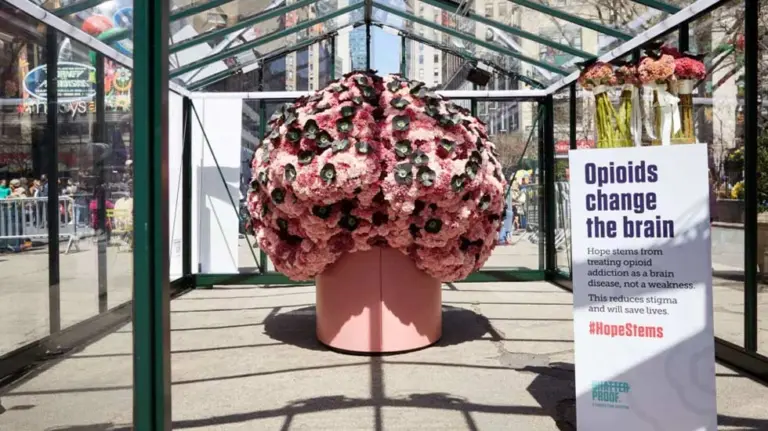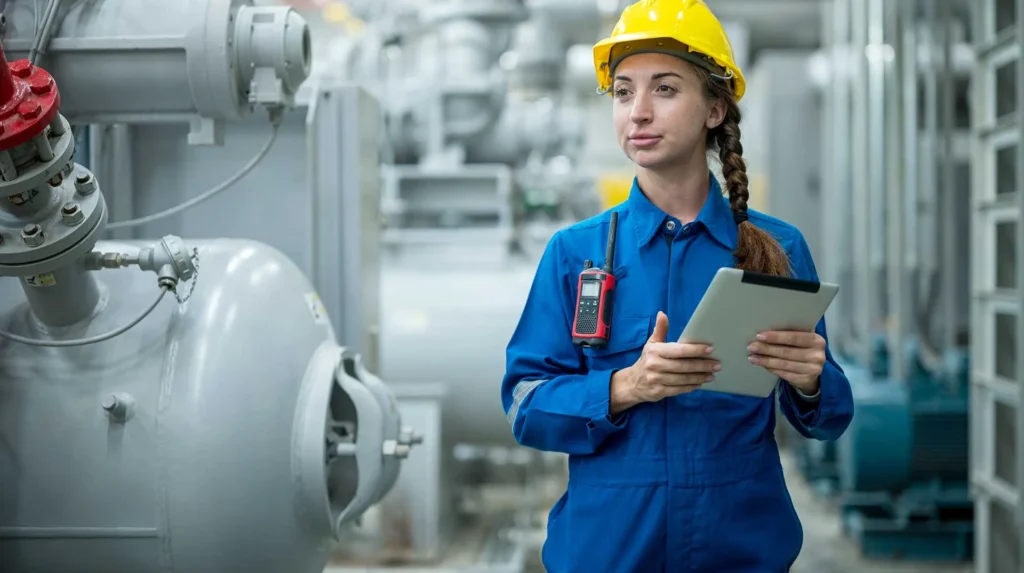by Naomi German
As a recent college graduate from Purdue University with a Bachelor’s in Industrial Hygiene, I often get the question at the Thanksgiving table, “So…what is industrial hygiene? Why did you choose it as a career? What do you actually do?” And then there’s the “Is it like a dental hygienist?”
(If you’ve wondered any of these questions as you’re reading, check out our post “What is Industrial Hygiene?”.)
To be clear, industrial hygienists and dental hygienists have very little in common.
This unfamiliarity is, in part, creating challenges for inspiring and attracting young professionals to join the field of industrial hygiene (IH). It’s important for professionals who are looking at potential careers in IH to understand the profound impact to workers’ health and well-being that they could have as industrial hygienists. They have a direct influence the health and wellness of employees on a large scale, ensuring that they all get home to their families safely at the end of the day, work healthfully throughout their time at the organization, and are free from life-threatening or debilitating occupational illnesses later in life.
The Recent Shift in the Industrial Hygiene Profession
The industrial hygiene profession is experiencing a shift in the makeup of its membership, with many of the industrial hygienists from the last 30-40 years now approaching retirement. It goes without saying that protecting employee health is a job that never ends, so that means that there’s currently an abundance of opportunities for young professionals interested in IH. The world is going to need industrial hygienists as long as there are employees working.
There is also a wide range of opportunities for professionals who are already in the field of industrial hygiene to move up the chain of command to the director level and C-suite. Although it can take time to reach positions at this level, young professionals can “plant the seeds” for change now, introducing new ideas and approaches which will grow and evolve as younger professionals’ careers develop.
When I was working in the pharmaceutical industry, I struggled to gain approval for new pieces of technology that could streamline our administrative tasks and was often met with resistance from the senior industrial hygienists. However, younger generations have grown up alongside technology. It’s been a part of our lives since we can remember. This means that members of younger generations already tend to think in terms of how technology can be applied to solve big challenges, including how it can make a IH systems and programs more efficient, improve organization and access to the information we manage, and more clearly demonstrate the value of technology to our employers.
Preventing Injuries and their Long-Lasting Consequences
More than other occupational health and safety (OH&S) disciplines, the field of industrial hygiene takes an especially long-term view of worker health, meaning that industrial hygienists are involved in the process of tracking and improving worker health from beginning to end. Being an industrial hygienist is a career that empowers you to keep people safe and prevent injury by designing out hazards, instead of merely treating injuries after they’ve already happened. Not only does this approach promote a highly preventive stance toward occupational health, but it also allows us to intervene before a worker is ever put at risk, and stop the secondary and tertiary effects that can result from exposure-related illnesses.
Let me explain. When I was in college, I was involved in a student’s group event called the “Brain Flower Project.” The club partnered with world-renowned florists to create a sculpture made from pink carnations and black paper poppies to represent the effect that opioids have on the brain. By presenting a dynamic visual representation of how opioid addiction literally changes the brain, this project de-stigmatized addiction, and brought attention to the rampant opioid epidemic in the United States.

According to the AIHA, “57% of individuals who died from opioid related deaths had at least one prior workplace musculoskeletal disorder (MSD).” To read more about this particular topic, see our previous post “AIHCe 2021: “The Impact of Workplace MSDs on the Opioid Crisis” – A Summary – VelocityEHS”. I never expected that in my future career I’d be using that sculpture as an example of how opioid addiction could be prevented, in part, by more effectively preventing physical injuries in the workplace, but this is just one example of the secondary and tertiary effects to worker health that industrial hygienists can help reduce. In addition to MSD exposure risks and ergonomic factors, industrial hygienists are also responsible for assessing and controlling a wide range of chemical exposure hazards, which keeps employees safe from carcinogens and teratogens (chemicals with reproductive hazards) which can have life threatening and life altering health impacts to not only workers, but to their children and even their children’s children.
In addition to safeguarding the health of workers, their families, and their communities, industrial hygiene offers young professionals a lot of opportunity and flexibility when it comes to the work lifestyle you can have. If you want to travel as part of your job, IH consultants work with different companies across the country and even around the globe to help develop and maintain their IH programs. If you’re a car enthusiast, you can work for any major car manufacturer and help design ergonomic improvements for drivers to make vehicles safer, more comfortable, and stylish. If you’ve always had a passion for biology and chemistry, industrial hygiene is a major priority for pharmaceutical companies who must protect workers from exposure to potentially dangerous drugs during production and lab trials. The beauty of the industrial hygienist career is that it’s essential to virtually every industry and company, which means that it’s sure to be in high demand for the foreseeable future.
